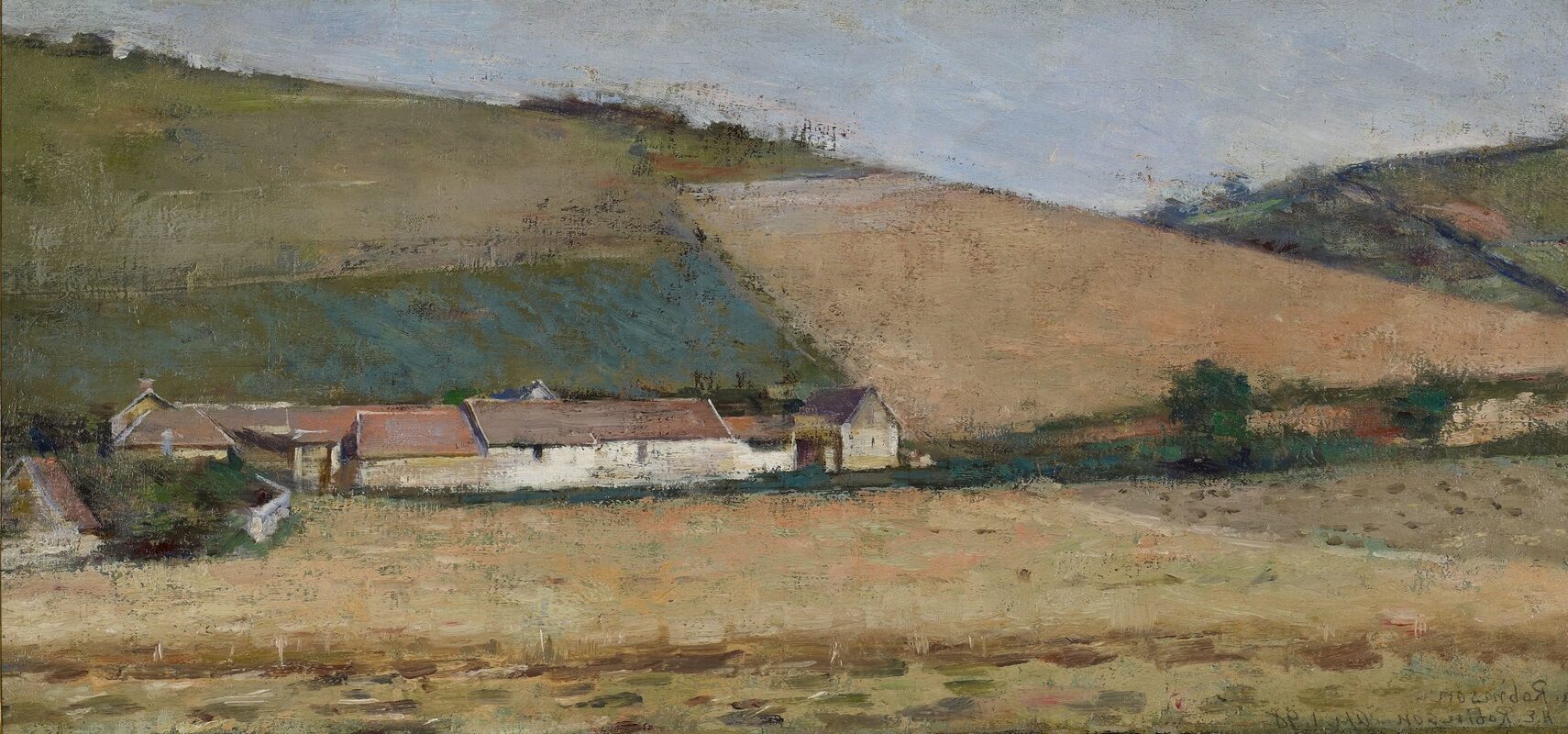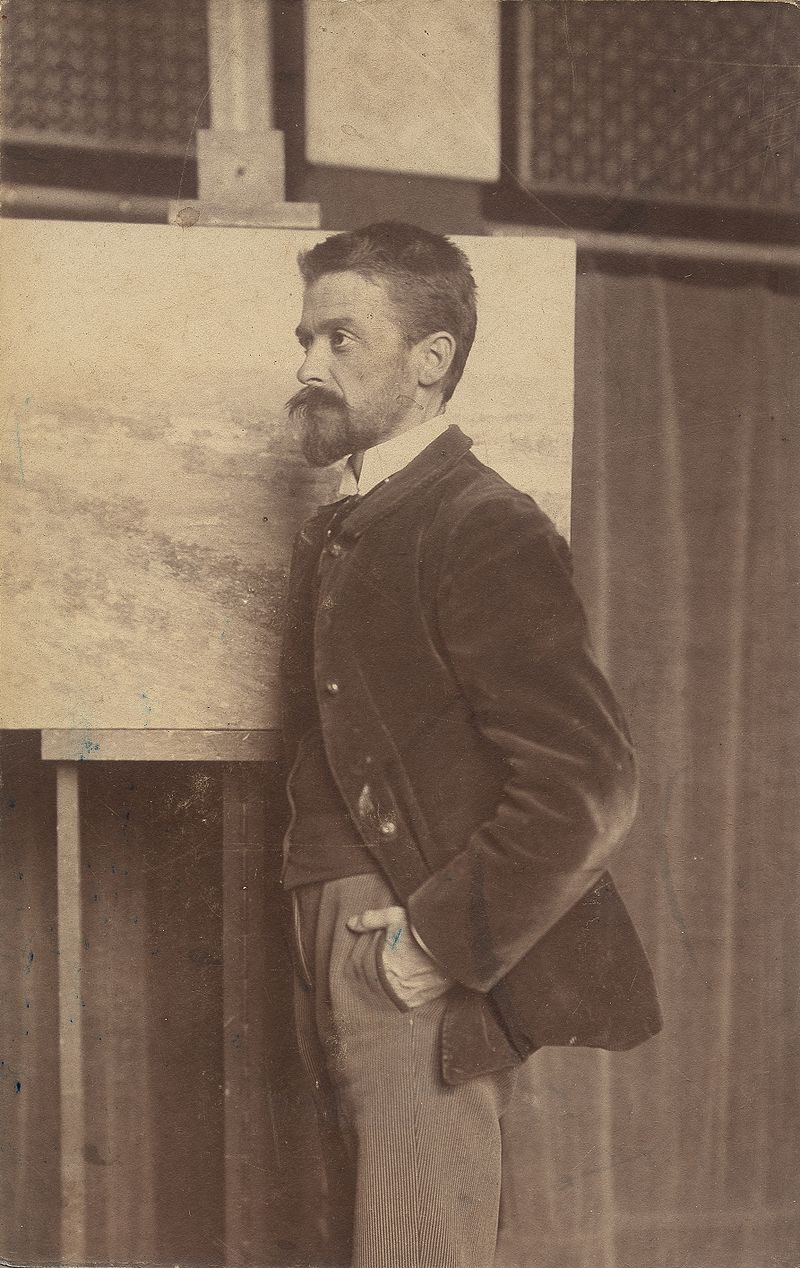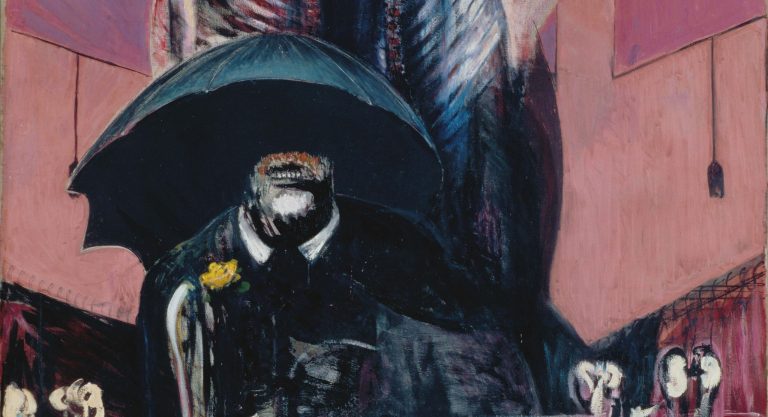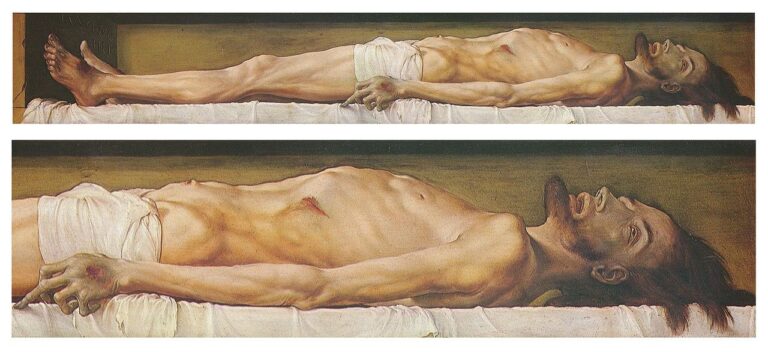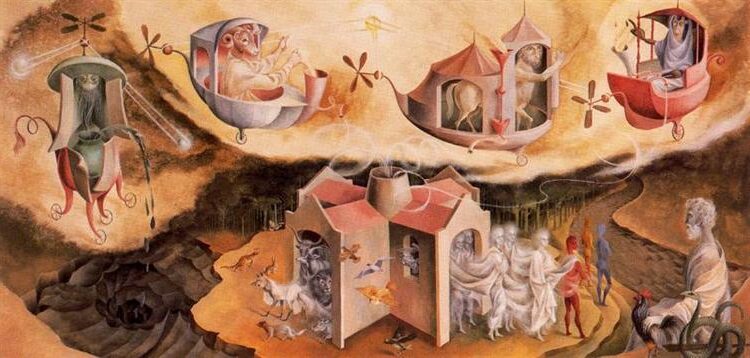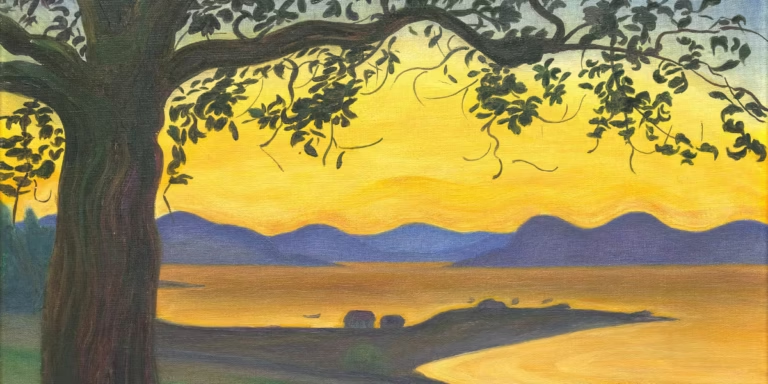Theodore Robinson: Painter Who Pioneered American Impressionism
Born: June 3, 1852, Irasburg, Vermont, US
Death: April 2, 1896, New York City, US
Art Movement: American Impressionism
Nationalité : Américain
Teachers: Carolus-Duran, Jean-Léon Gérôme
Institution: National Academy of Design, Art Students League of New York, École des Beaux-Arts
Theodore Robinson: Painter Who Pioneered American Impressionism
Vie et éducation précoces
Theodore Robinson’s artistic journey began in rural Vermont. It took him through midwestern America to the vibrant art scenes of New York and Paris. His formative years laid the groundwork for what would eventually make him a pioneer of American Impressionism.
Birth and Early Years in Vermont
Theodore Robinson was born on July 3, 1852, in Irasburg, Vermont. His early childhood was spent in this rural New England setting, which likely influenced his later landscape work. When Robinson was still young, his family relocated to Evansville, Wisconsin, seeking better opportunities. This midwestern upbringing exposed him to different American landscapes and environments.
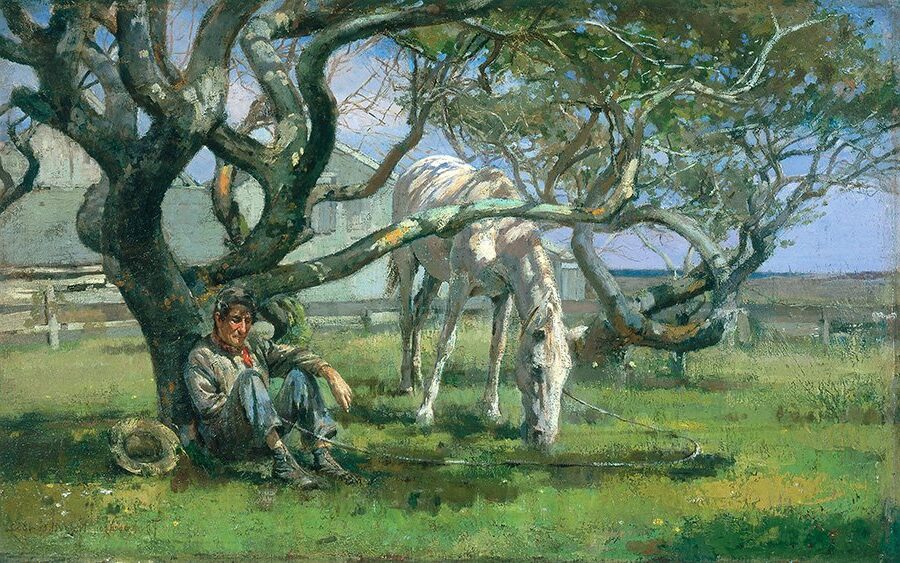
Nantucket, 1882, by Theodore Robinson
Robinson’s family life was modest, and reports suggest his father worked as a Methodist minister. These early years in Vermont and Wisconsin shaped his perspective on rural American life, themes that would later appear in his artwork.
Art Education in Chicago and Paris
Robinson’s formal art training began in Chicago, where he briefly studied before moving to New York. In New York, he continued his education at the Art Students League and the National Academy of Design, establishing himself in America’s premier art community.
The most transformative period of Robinson’s education came when he traveled to Paris. There, he joined the community of American students studying European techniques and styles. Paris exposed Robinson to new artistic movements, particularly Impressionism, which would profoundly influence his work.
In Paris, he absorbed the innovative approaches to light, color, and outdoor painting that characterized the Impressionist movement. This European training combined with his American sensibilities created Robinson’s distinctive artistic voice. He was among the first Artistes américains to incorporate photography into his creative process, using camera images to inform his painted compositions.
Carrière artistique et influence

A French Hamlet, 1892, by Theodore Robinson
Theodore Robinson’s career spanned from decorative painting to becoming one of America’s foremost Impressionist artists. His time in France and relationship with Claude Monet significantly shaped his artistic development and helped introduce Impressionist techniques to American art.
Le développement de l'impressionnisme
Robinson began his formal training at the National Academy of Design in New York and later studied at the École des Beaux-Arts in Paris. His early work followed academic traditions, showing skilled draftsmanship and careful composition.
In the 1880s, Robinson worked as a decorative painter for Prentice Treadwell in Boston, developing technical skills that would later influence his approach to canvas. During this period, he visited Barbizon, exposing himself to the French plein air tradition.
The turning point in Robinson’s career came when he encountered Impressionism. Unlike many American artists who initially rejected the style, Robinson embraced its principles of light, color, and atmosphere. His technique evolved to include looser brushwork and a brighter palette.
American Impressionism and Giverny
Robinson made several trips to Giverny, France between 1887 and 1892, becoming one of the few Americans admitted into Claude Monet’s circle. This relationship proved pivotal for Robinson’s artistic development.
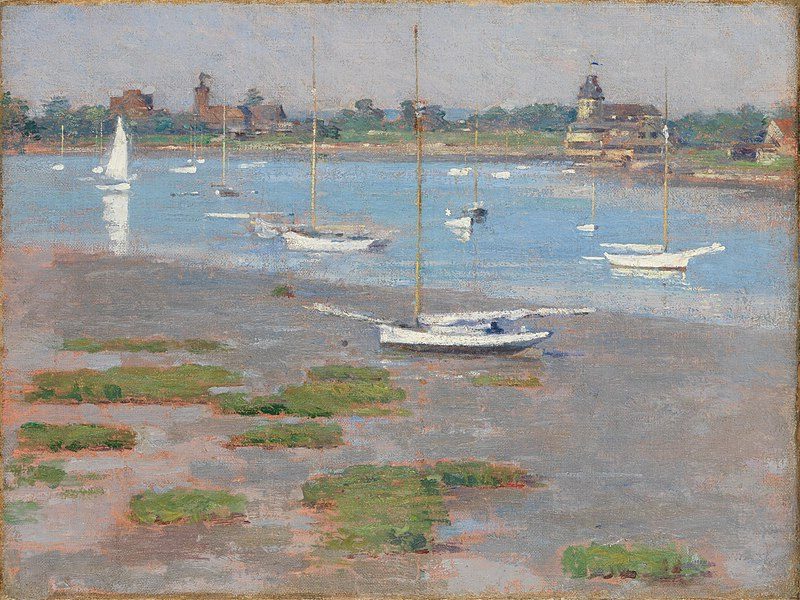
Low Tide, Riverside Yacht Club, 1894, by Theodore Robinson
In Giverny, Robinson refined his Impressionist technique while maintaining his distinctive American sensibility. He painted alongside Monet, absorbing the master’s approach to capturing changing light conditions and atmospheric effects.
Unlike Monet, Robinson maintained a stronger emphasis on structure and form. His paintings balanced Impressionist light and color with more traditional compositional elements, creating a unique bridge between European and American styles.
Robinson brought these techniques back to America, helping establish what would become known as Impressionnisme américain. He influenced fellow artists through both his work and his teaching.
Principales œuvres et expositions
Robinson’s most celebrated paintings include landscapes and figural works that showcase his mastery of Impressionist techniques. “The Wedding March” stands as one of his most significant achievements, demonstrating his ability to blend figures with landscape.
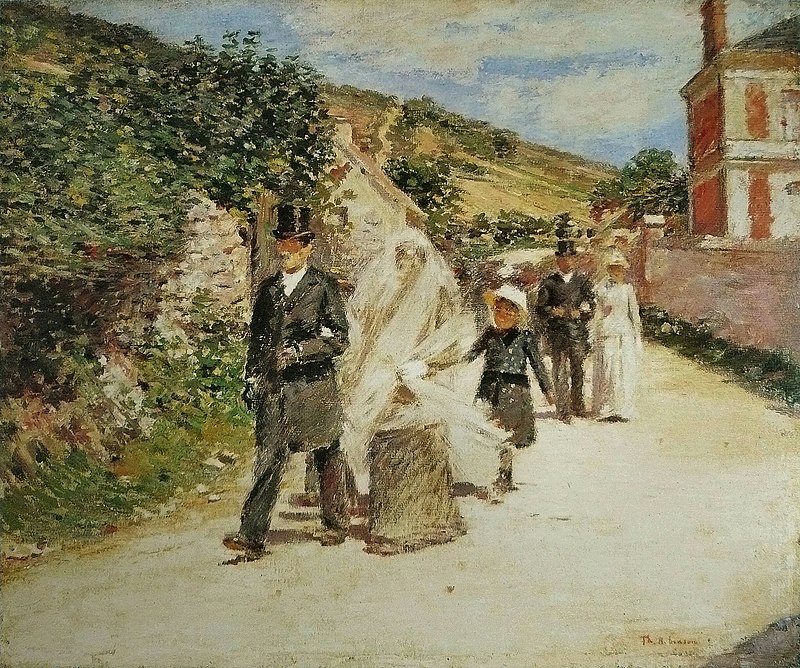
The Wedding March, 1892, by Theodore Robinson
His oil paintings often featured rural scenes, farmhouses, and ordinary people engaged in daily activities. Robinson’s brushwork was distinctive—looser than academic painting but more controlled than some French Impressionists.
Robinson exhibited with the Society of American Artists and gained recognition through gallery showings in New York. Despite his relatively short career, his work appeared in important exhibitions that helped introduce Impressionism to American audiences.
By the time of his death in 1896, Robinson had established himself as a leading American Impressionist. His paintings now hang in major museums, including the Metropolitan Museum of Art and the Terra Foundation for American Art.
Héritage et reconnaissance

World’s Columbian Exposition, 1894, by Theodore Robinson
Theodore Robinson’s contributions to American Impressionism left a lasting mark on the art world despite his relatively short career. Though underappreciated during his lifetime, Robinson’s importance as a pioneer who bridged French Impressionist techniques with American sensibilities has grown substantially over time.
Collections and Retrospectives
Robinson’s works are now treasured in prestigious institutions across the United States. The National Gallery of Art in Washington D.C. houses several important pieces, displaying them alongside other American Impressionist masters. The Art Institute of Chicago maintains a significant collection of his paintings, recognizing his pivotal role in American art history.
The Brooklyn Museum has featured Robinson’s work in special exhibitions highlighting early American Impressionism. These retrospectives have helped modern audiences discover and appreciate Robinson’s delicate brushwork and luminous landscapes.
Since his death in 1896, major retrospectives have gradually elevated Robinson’s status. Museums continue to acquire his paintings, often featuring them prominently in exhibitions about the development of American Impressionism.
Impact sur l'art américain
As a founding member of the Society of American Artists, Robinson helped create opportunities for progressive painters when traditional academies remained conservative. His close friendship with Claude Monet at Giverny proved instrumental in transferring Impressionist techniques to American soil.
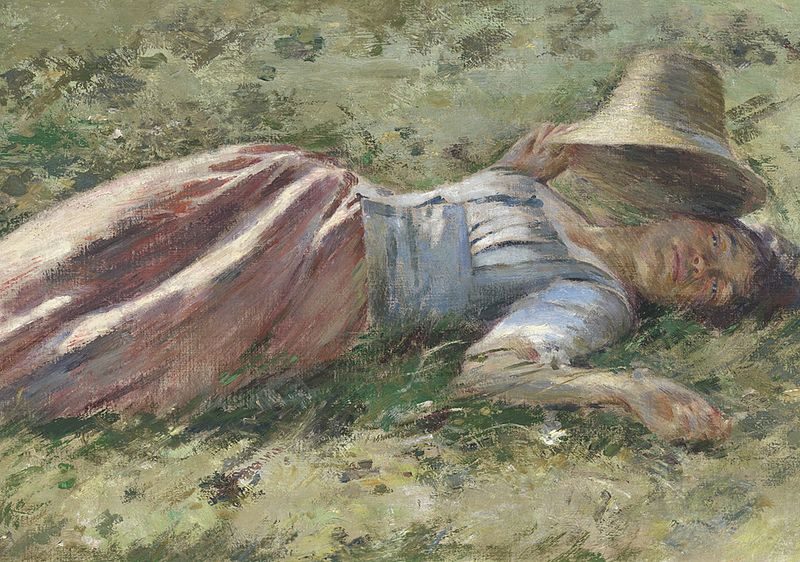
In the Sun, 1892, by Theodore Robinson
Robinson’s influence extended through his teaching and mentorship of younger artists. His willingness to embrace new artistic approaches while maintaining l'excellence technique inspired many followers.
The artist’s legacy lives on as art historians increasingly recognize him as the leading American disciple of Impressionism. His work forms a crucial link between European innovations and distinctly American sensibilities in landscape painting.
Robinson’s artistic vision helped establish a uniquely American version of Impressionism that differed from its French origins while maintaining its essential spirit of capturing light and atmosphere.
Questions fréquemment posées
Theodore Robinson significantly shaped American Impressionism through his distinctive style and European influences. His life, artistic techniques, and relationships with other artists provide insights into his importance in art history.
Who was Theodore Robinson and what is his significance in American art history?
Theodore Robinson was an American painter born on June 3, 1852, in Irasburg, Vermont, who became one of the first American Impressionists. He died relatively young at age 43 on April 2, 1896, in New York City after struggling with severe chronic asthma throughout his life.
Robinson’s significance lies in his pioneering role in bringing Impressionist techniques from France to America. His work created a bridge between European Impressionism and American art traditions. He helped establish Impressionism as a respected movement in American art during the late 19th century, influencing many artists who followed.
What are the characteristic features of Theodore Robinson’s painting style?
Robinson’s style featured vibrant color palettes and loose brushwork characteristic of Impressionism. He often painted outdoors (en plein air) to capture changing light conditions and atmospheric effects.
His work balanced Impressionist techniques with more traditional compositional structure. This created paintings that were innovative yet accessible to American audiences.
Robinson frequently depicted paysages ruraux, particularly scenes from Giverny, France, and the American countryside. His paintings often included human figures integrated harmoniously with milieux naturels.
Which art movements was Theodore Robinson associated with during his career?
Robinson was primarily associated with American Impressionism, becoming one of its earliest and most important practitioners. His training began with more academic approaches before he embraced Impressionist techniques.
He studied at the National Academy of Design and the Art Students League in New York, institutions that taught traditional methods. His time in France exposed him to Impressionism, which transformed his artistic approach. While Impressionism defined much of his mature work, Robinson maintained certain academic elements in his composition and draftsmanship.
What are some of Theodore Robinson’s most notable works and where can they be viewed?
Among Robinson’s most celebrated works are “La Débâcle” and “The Wedding March,” which showcase his mature Impressionist style. “Valley of the Seine” and “Woman on a Porch” are also significant paintings in his portfolio.
Many of Robinson’s paintings can be viewed at major American museums including the Metropolitan Museum of Art in New York, the National Gallery of Art in Washington D.C., and the Terra Foundation for American Art.
The Phillips Collection and the Smithsonian American Art Museum also hold important works by Robinson that demonstrate his artistic development and mastery.
How did Theodore Robinson contribute to the development of impressionism in the United States?
Robinson was instrumental in introducing Impressionist techniques to American art circles after his experiences in France. His return to America brought firsthand knowledge of French Impressionism that he shared through his teaching and exhibitions.
He helped establish art colonies where Impressionist methods could be practiced and taught. These communities fostered the growth of the movement throughout the United States.
Robinson’s writing about art also helped educate Americans about Impressionist principles and techniques, furthering the movement’s acceptance and growth in the country.
What was Theodore Robinson’s relationship with other prominent artists of his time, such as Claude Monet?
Robinson developed a significant friendship with Claude Monet during his time in Giverny, France. He was one of the few Americans to establish a close relationship with the French master.
Their artistic exchange influenced Robinson’s work. Particularly, it affected his approach to light and color. Robinson maintained his own distinctive style while incorporating elements he learned from Monet’s techniques.
Robinson also maintained connections with American artists. These artists included John Henry Twachtman and J. Alden Weir, who were fellow pioneers of American Impressionism.
These relationships fostered the exchange of ideas within the growing American Impressionist movement.

